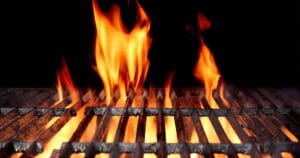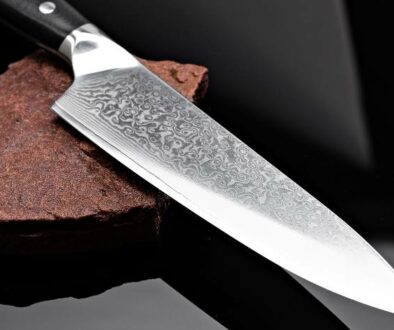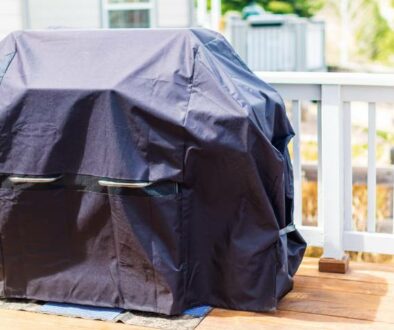Charcoal Grill vs Gas Grill: Which is best for you
You might be thinking: ‘I’m sure it won’t be that bad!’; and while yes, maybe it won’t be very stressful- there are a lot of factors that you will have to take into consideration before making the big purchase, like which grill is safer, which grill can be used in more than one way, which one’s more wallet-friendly, so- on and so- forth. Do you see what I mean?
Don’t worry, though! We’ve compiled all sorts of important points to finally put the debate to rest and help you choose which grill is better: a charcoal grill or a gas grill?
Let’s get started, shall we?
Heat time and Temperature

Heat- up time:
Both charcoal grills and gas grills need to be preheated ahead of cooking so that by the time you’re ready to start grilling, they are set to the perfect temperature for cooking; but just how much time is needed?
Charcoal grills can take up to 20 minutes to heat up on average, and that’s not including the time it takes to light up the charcoal and get it going. If you have the time and patience for your grill to heat up and become at the proper cooking temperature, then continue! But for all those impatient and hungry folks that want nothing but to get started on the grilling, this might be a big no-no.
When lighting up your charcoal grill, there might be a couple of trial- and- errors until the charcoal finally catches on fire and spreads, and during said trial- and- errors. With a gas grill, you just need to press a button to turn it on, move the handle, then give it about 10 (or less) minutes for it to reach proper cooking temperature. Much less than the charcoal grill, huh? You also can turn the heat up and down to your liking without having to worry about burning yourself with hot coals- which is a big plus!
Temperature
A quick thing to take notice of is that charcoal grills can usually reach higher temperatures that gas grills are not able to. We’re talking above 600° F, up to 900° F! High heat is what’s needed to get your steaks as crispy as you like them, but your standard gas grill might not be able to reach such high numbers!
So, in brief: in terms of heat-up time: gas grills definitely win; while in terms of heat itself: charcoal grills take the crown.
We could say they are 1:1.
Safety
The topic of safety is a bit of a difficult one since both grills have their hazards and if not handled properly, they can be dangerous. With that being said, one grill can still have the upper hand over the other! Shall we see?
When working with charcoal, fire risks are higher. With gas grills, you can turn a knob and extinguish the fire- however, charcoal grills are slightly trickier: coals and sparks can make their way through vents and if not taken care of- something ugly could happen. Another risk is random flare-ups that could burn your food and cause health risks.
With all that being said though, you can easily avoid these problems if you carefully handle the grill to avoid fire risks; and if you keep items like gloves, tongs, squirt guns, and more safety precautions near you, you can avoid flare-ups and any dangers of burning yourself! Simply use the gloves and/ or tongs and your good, and spray some water with your squirt gun in case of any flare-ups!
Next, we have gas grills; like charcoal grills, gas grills can also be dangerous. When cooking with a gas grill, you need to be absolutely sure that your propane tank is attached properly with no leaks, and that there is no grease on your grill, since, after all, gas is explosive. Compared to cooking with a charcoal grill, you need to be extra careful, and it’s recommended by many to have your gas grill at least 10 feet or so away from your home in case of any mishaps.
As you can see, both grills can be safety hazards in their own ways if not taken care of properly, however, we’re going to go with charcoal grills for this one, you can always take care of fires before they become too big, explosions on the other hand not so much.
the score so far :
Charcoal grills: 2 points.
Gas grills: 1 point.
Effect on taste
The taste of your food is a very important factor in the heated debate of charcoal grills VS. gas grills.
Charcoal grills give your food that traditional crispiness and smoky flavor you look for in your meal, that well- known scrumptious flavor is achieved by the help of high temperature: the food you have on the grill releases drips onto the hot coals, which in turn release flavored steam and smoke that infuses in your grilled meat. The longer you cook it, the bigger the impact. But, keep in mind that while the key is allowing your food to stay under the high temperature to achieve the smoky flavor, too much smoke can make your food bitter! If that’s what you’re looking for, then go charcoal.
Gas grills, on the other hand, are propane-based, so rather than a smoky flavor from the help of coals and/ or wood chips, you get a more bacon-like taste on your dish (again, if that’s what your want, you do you). With that being said, gas grills produce more steam than charcoal grills, which in turn gives the meat more moisture.
We can say that in terms of smokiness, charcoal grills take the crown; while in terms of moisture, gas grills rule. Maybe… tie?
The points so far are charcoal grills: 3 points; gas grills: 2 points.
Cleaning

Thorough cleaning sessions are needed at least once a season to make sure that your grill is as clean on the inside as it should be; so, until that time of the season comes, you should always maintain a consistent clean- up routine that should be done after every use of your grill.
Charcoal grills can be a bit of a hassle to clean up; with a charcoal grill, you need to wait for it to not be scorching hot, scrub off any residue once it’s hot- but not too hot to the point of burning yourself-, then you need to wait some more for it to cool down completely and get rid of the ashes left from the BBQ session, and then you can do another quick wipe down to make sure there aren’t any leftovers and drips left from your grilling.
Meanwhile, gas grills are a whole different story. Cleaning gas grills after your BBQ ends is much easier if you were to compare it to charcoal grills. Rather than going through the process of getting rid of any ash and drips from your food, you can just do a quick wipe, and voila- you’re done!
However, keep in mind that you might need to maintain more frequent and do more routine cleaning with a gas grill than you would with its opponent, as carbon and grease can build up under the burners- if you discard this, the grease could catch on fire and put you and others in danger if there is no fire extinguisher around. Also, insects (such as spiders) like to make a home down in the tubes… don’t say we didn’t warn you!
For all of you who want nothing else but to rest after eating good food, it is clear that gas grills take this win; save time cleaning up, and take a long nap? Sounds good to me!
The points are now tied at 3:3.
Price tags
When one is first being introduced into the world of grills, they might think it’s a good idea to go big or go home; and while that trail of thought is not completely wrong (especially if you already are familiar with grilling), it might be better to purchase a grill that not only suits your taste but is also a suitable price for you.
Charcoal grills are much more wallet-friendly than gas grills. Ranging from prices as low as $20 USD to up to $2,000 or more, you can find a grill that fits into your budget and can get you started up on the wonders of grilling if you’re a beginner! One thing to note, though, is that the longevity of your grill will not only depend on the materials it’s made out of, but how you take care of it as well.
Gas grills are on the pricier side of the spectrum. Gas grills have a starting price of $100 USD and can rack up to $10,000. Why? Well, because gas grills have more complex mechanisms, and can come in varying ways that we’ll be mentioning soon. Remember that the price of your grill can reflect on the durability, but its’ durability will also depend on your frequent maintenance of it!
We believe that charcoal grills have taken the lead again, with 4:3 points.
Usability
Of course, if you’re planning on putting your hard-earned money on a shiny new device, it would be preferable if it could be used in more ways than one; in this specific area, gas grills take the upper hand.
With a charcoal grill, it’s great to cook your steak and some side dishes, and enjoy a smoky meal for the afternoon; yet sometimes, just sometimes, we crave for other dishes that won’t have the usual smokiness, but with a charcoal grill that might be a bit hard to achieve.
With a gas grill, however, you can cook a wide range of dishes- from delicacies like fruits and vegetables to use as side dishes for your steak and chicken, to seating up some leftovers or even a pizza, yes a pizza done the right way, can be cooked on a gas grill. Gas grills can do it all. And you don’t have to worry about an overpowering smoky flavor that comes with a charcoal grill.
And if the fact that you can cook different foods in your gas grill is not enough, gas grills also have a wide range of accessories; from side burners to keep dishes warm, to installing lights or side tables- you can do and add almost anything to this type of grill (side note: this all comes with additional charges that might not be pocket- friendly).
Gas grills have tied the points again.
Portability
What charcoal grills miss out on in terms of usability, they make up for in portability. Charcoal grills definitely win this one!
While hosting BBQ parties in your backyard is fun, sometimes the area of the apartment building you live in may have rules set for charcoal grills regarding how high the temperature can go, or in some extreme cases: absolutely banned the use of charcoal grills. In cases like these, it’s extremely useful to have a portable grill that you can take to-and- from the park, the mountains, your friend’s house, and more.
The charcoal grills come into play here; while it is still possible to take a full-size charcoal grill from your house and to other places if you look on the market, you will also find many high-quality portable charcoal grills that are smaller in size, and come with foldable pieces to make the transportation easier for you. Again, as mentioned before: charcoal grills are relatively cheaper in price compared to gas grills; you can find portable charcoal grills online or at your local BBQ store for prices as low as $20. Is that not a steal?
Now, portable gas grills are also available in different sizes, but there is a higher risk; as mentioned before, gas is explosive, and it can be too much of a hassle and danger to take a gas grill whether big or small to the park, also not to forget the big difference in the price of each one. This is why it’s best to go with charcoal grills in terms of portability.
Charcoal grills are winning, yet again, with 5: 4 points.
Alright, I believe we’ve covered all the necessary points to compare- and- contrast charcoal and gas grills- from how long it takes to heat up, to how safe it is, and even the taste each one produces, we truly have covered it all! To briefly summarize this:
- If you’re looking for dishes full of that unique flavor we all know and love, go with a charcoal grill.
- If you’re looking for convenience and saving time to enjoy your food with your family, go with a gas grill.
- Or, the third option that often goes unseen, you can find on the market grills that are a mix of both, charcoal and gas grills together (although, they aren’t known to work very well or last long!).
If you want to go by the points each grill scored in this grueling fight: charcoal grills are the winners! But if you still want a gas grill, you should definitely go for it after all we are just helping you with the research.
Charcoal grills require the use of charcoal briquettes, which need to be lit using a lighter fluid or chimney starter before cooking can begin. This typically takes about 10-15 minutes before the grill is hot enough to use. Gas grills, on the other hand, use propane or natural gas and can be heated up instantly with the push of a button. Additionally, the taste of food cooked on a charcoal grill tends to have more smoky flavor due to the use of wood or charcoal briquettes, while food cooked on a gas grill may have a less distinct flavor. And finally, while both types of grills need regular cleaning and maintenance, charcoal grills may require more frequent ash removal and overall upkeep compared to gas grills. Ultimately, it all comes down to personal preference in terms of taste and convenience. Both types of grills have their own unique benefits and drawbacks – the choice is yours!
In addition to adding a subtle smoky flavor, charcoal generates intense heat, helping to create the perfect sear on meats and vegetables. Plus, using a charcoal grill can also save you money in the long run. Charcoal is often cheaper than propane and doesn’t require electricity, making it a great option for outdoor cooking. Another benefit of using a charcoal grill is that it can actually be more environmentally friendly. Charcoal produces less carbon monoxide and fewer harmful chemicals than gas grills, reducing air pollution while you cook.
When it comes to outdoor cooking, gas grills have many advantages over traditional charcoal grills. For starters, they are much easier to light and heat up quickly, allowing you to get cooking faster. In addition, gas grills offer more control over the temperature, making it easier to cook food evenly without hot spots or flare ups. Cleanup is also a breeze with a gas grill – just turn off the gas and scrape any leftover food off the grates before giving them a quick wipe down. And for those looking for a healthier option, gas grills produce less smoke and thus fewer cancer-causing chemicals such as heterocyclic amines (HCAs). So for convenience, ease of use, and healthier cooking options, it’s hard to beat a gas grill.




